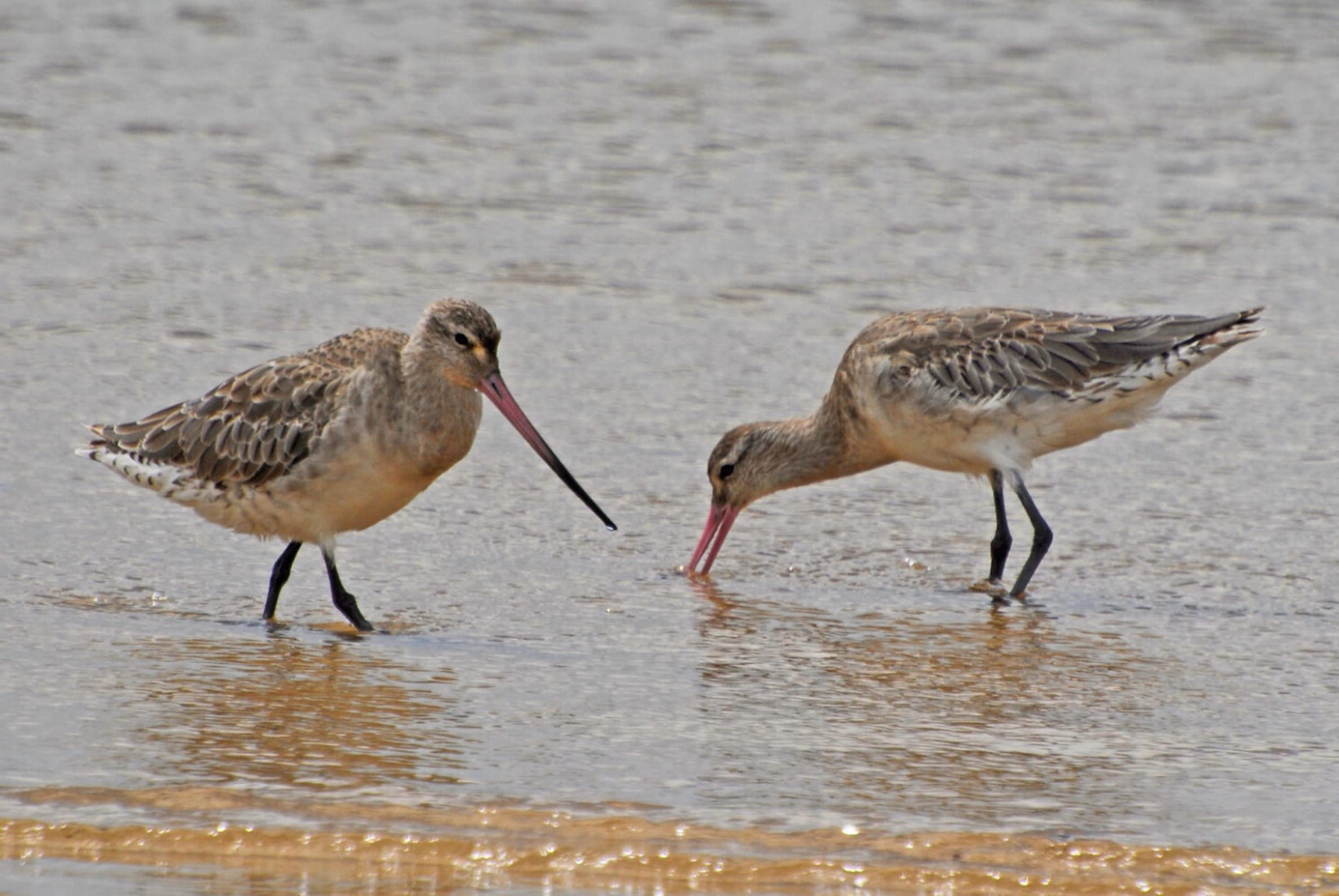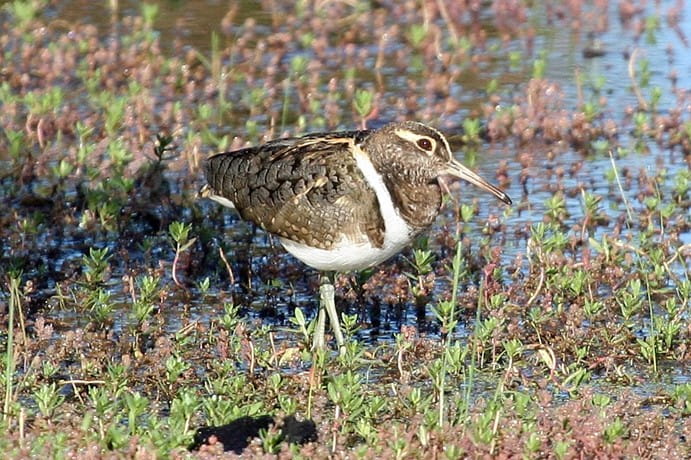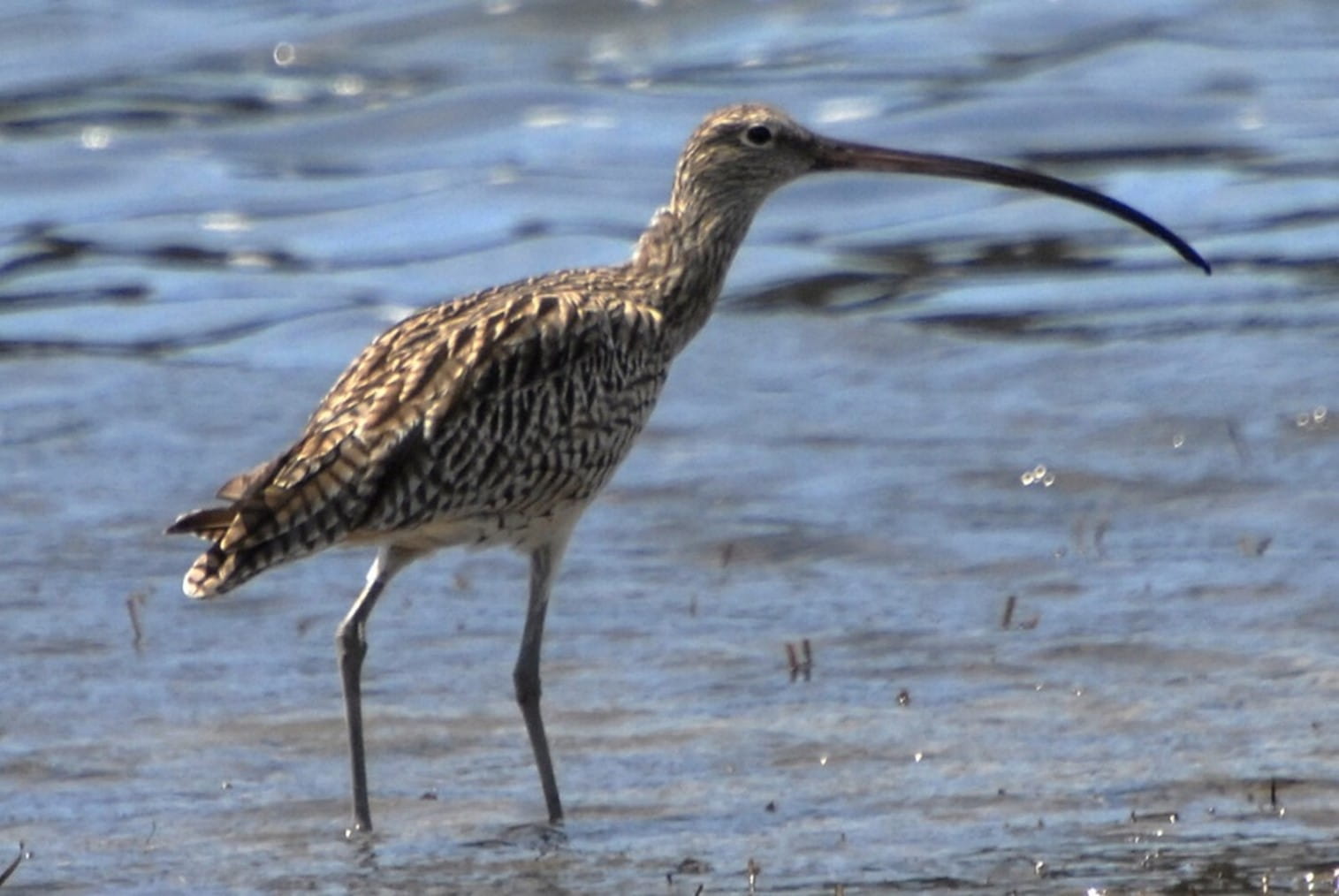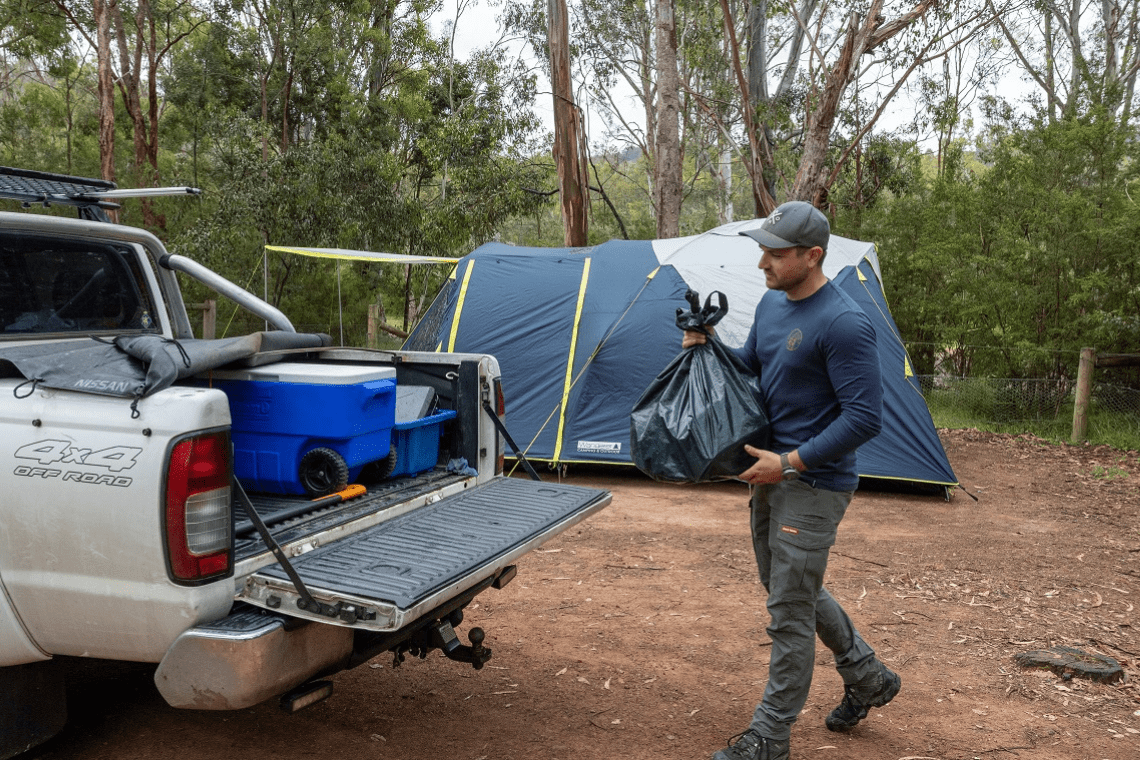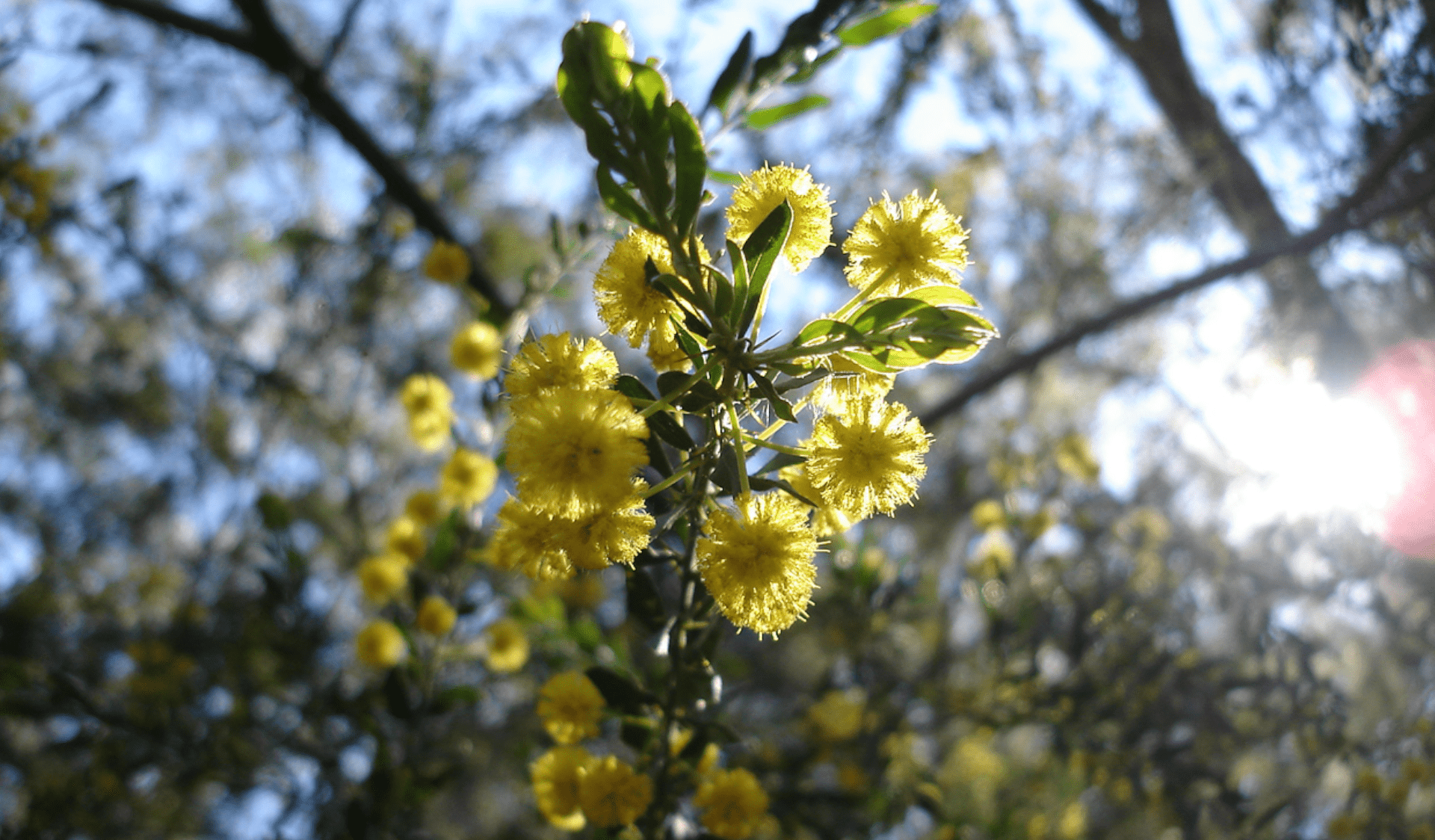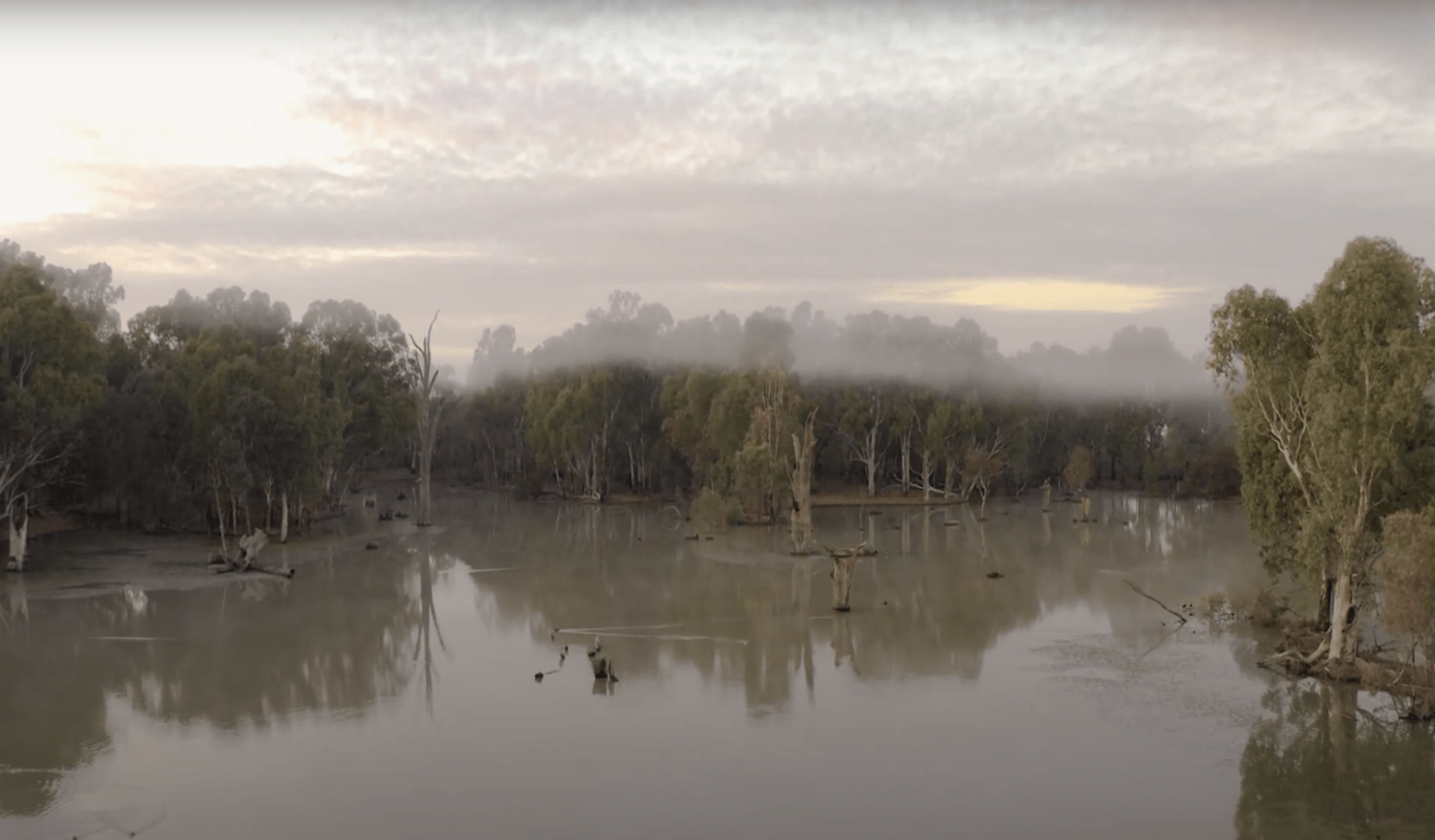Six spectacular shorebirds and where to find them in Victoria, Australia
Thursday 7 March, 2024
Key Points
• Some migratory shorebirds can fly halfway across the world to reach feeding grounds in Victoria and southern Australia.
• Parks Victoria helps manage 11 of the 12 known Ramsar wetlands across the state.
• Shorebirds represent some of the most endangered bird species in the world with numerous threats impacting their survival
The longest non-stop flight record of any bird was broken by a Bar-tailed Godwit in 2022, when an individual flew from for more than 11 days and covered 11,560 kilometres. Image credit: Steven Kuiter.
Can you imagine flying a distance comparable to the moon? By the age of 15, the endangered Bar-tailed Godwit (Limosa lapponica) will have flown more than 380,000 kilometres from areas such as Alaska to southern Australia numerous times.
These birds are part of a diverse group called shorebirds and Australia is home to more than 50 different species. While some of these birds take marathon flights of endurance to and from the sub-arctic regions, others opt for shorter stopovers to and from New Zealand. Some species will stay in Australia for their entire lives. Shorebirds belong to the diverse taxonomic order known as the Charadriiformes and most are found wading along shorelines and mudflats as they forage for food.
Dr. Mark Antos, Manager of Biodiversity Science at Parks Victoria, says "some of these birds are so rare to find that we don’t have a clear picture of where and when they migrate. Most of them rely on high-quality wetlands for stop-over locations along the way. It’s a bit like us stopping at service centres and roadhouses during long road trips in the family car.”
With more than 4 million hectares managed by Parks Victoria, we look after some of the most endangered shorebird habitats in Australia. Let’s take a look at some of these birds.
Australian Painted Snipe (Rostratula australis)
Be warned, this bird blends in with their surroundings perfectly. Image credit: Parks Victoria.
The endangered Australian Painted Snipe is one of the most elusive shorebirds in Australia. Records of this bird are so rare, we can’t confidently say where you can see them. Mark states, "they have a habit of turning up unexpectedly in wetlands and sending local birdwatchers aflutter. The species prefers shallow freshwater wetlands with plenty of vegetation”.
Any sighting of the snipe is valuable data for scientists; if you think you’ve seen one, submit a record for the Australian Painted-snipe tracking project.
Hooded plover (Thinornis rubricollis)
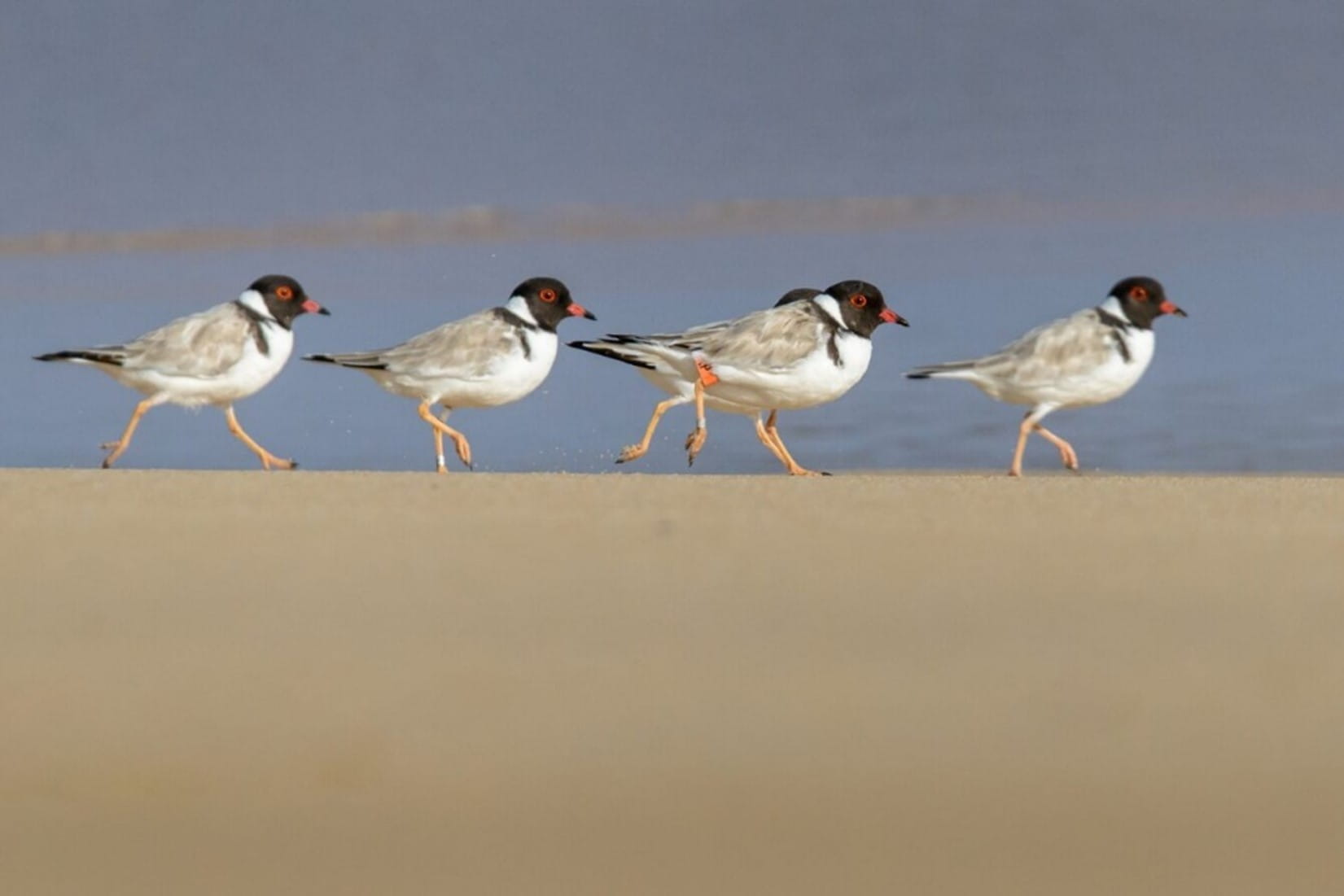
The Hooded Plover is a small shorebird affectionally known as a “hoodie”, due to its conspicuous black head. It is often found bobbing in between seaweed piles in the splash zone looking for tiny crustaceans. Image credit: Mark Lethlean.
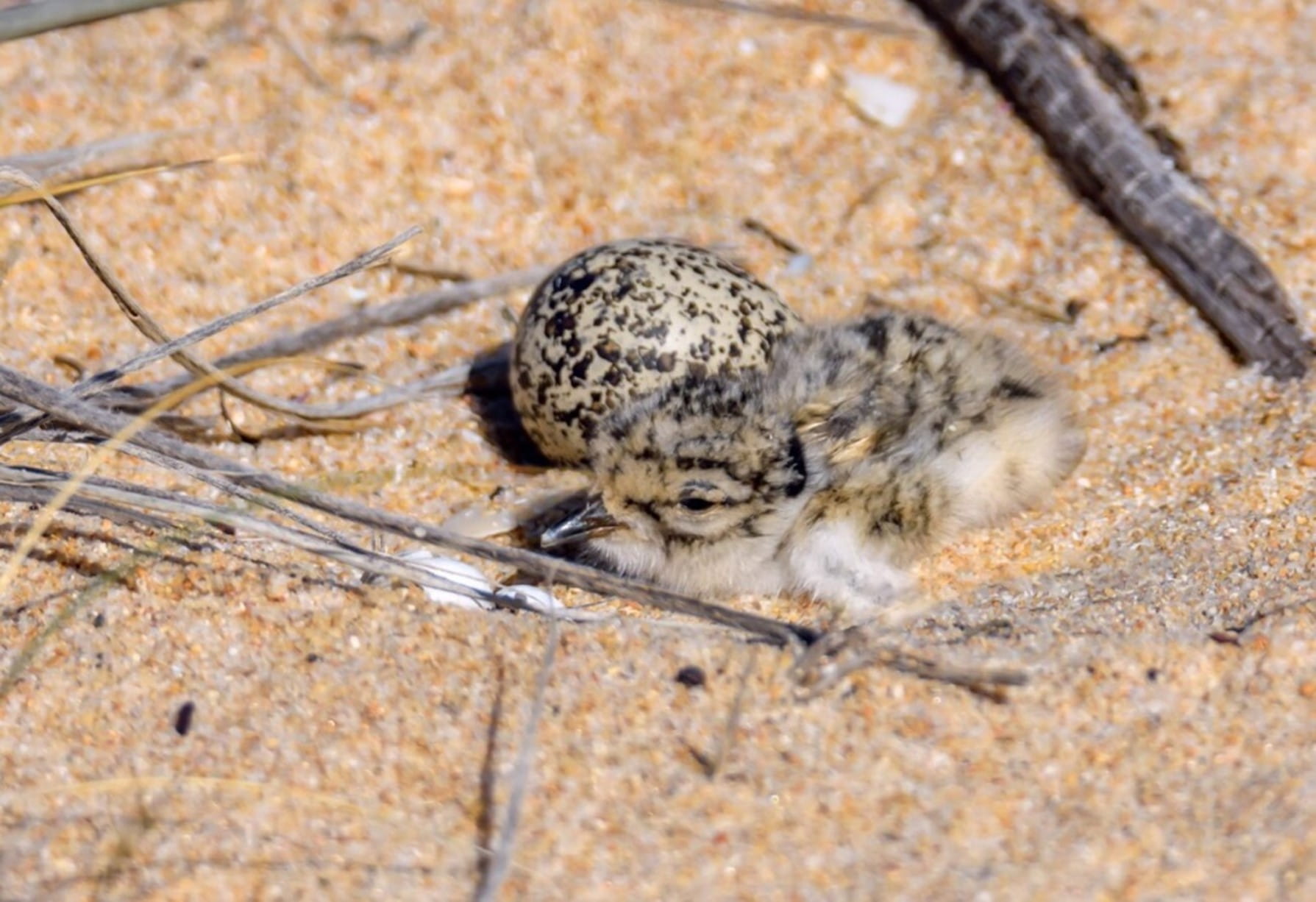
This adorable chick (pictured), recently hatched, was found on a beach in the Mornington Peninsula National Park. The park has one of the highest densities of “Hoodies” in Victoria. Because these birds spend their entire lives on our beaches (including the vulnerable nesting and fledgling stages) they require special care and protection from disturbance. Image credit: Mark Lethlean.
Sooty Oystercatcher (Haematopus fuliginosus) and Australian Pied Oystercatcher (Haematopus longirostris)
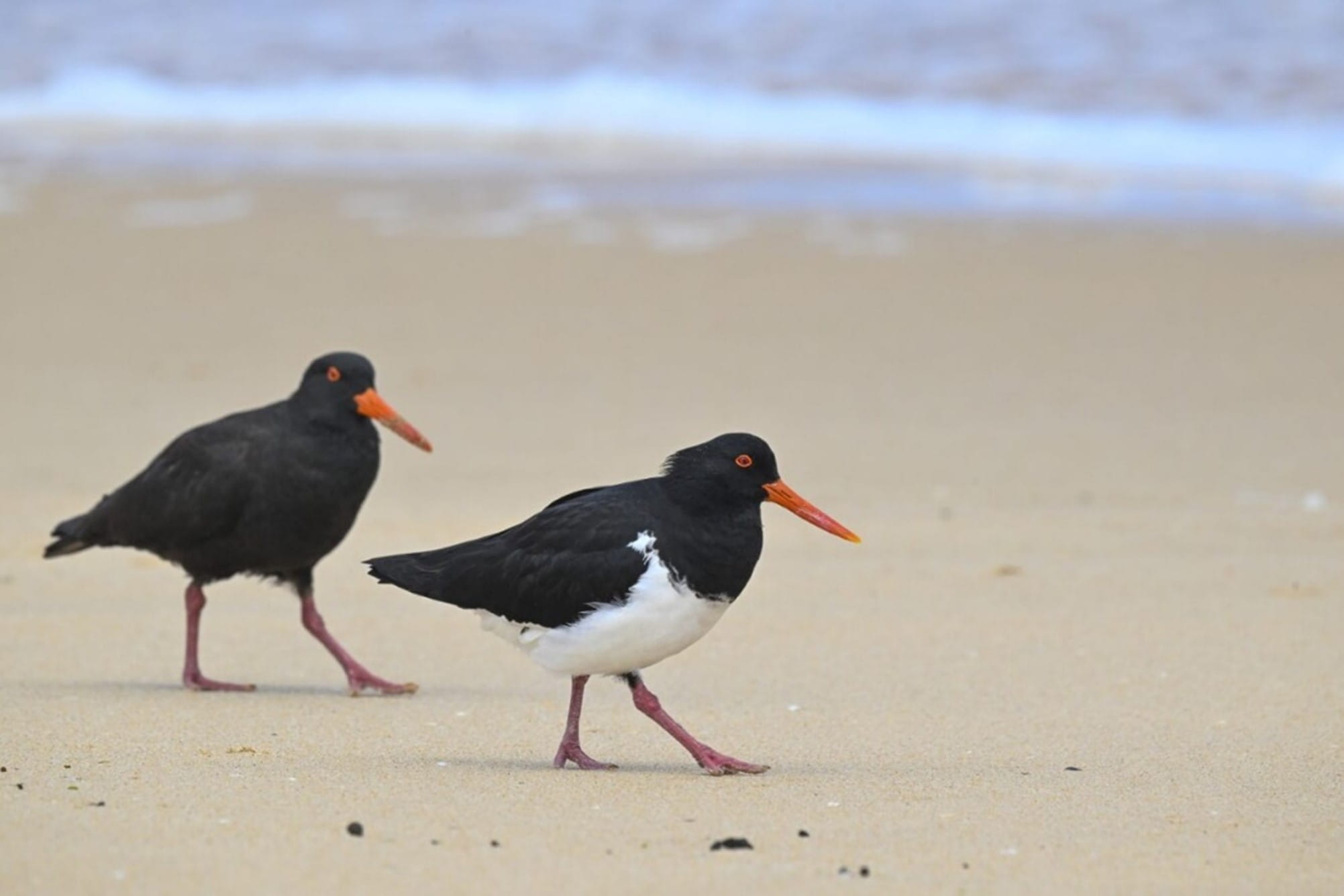
The Sooty Oystercatcher (all black colour) and the Australian Pied Oystercatcher (white breast and belly) have long, chisel-shaped bills. Their orange beaks plunge into the sand to find small cockles and pipis and prise them apart to gobble the soft flesh inside. Image credit: Mark Lethlean.
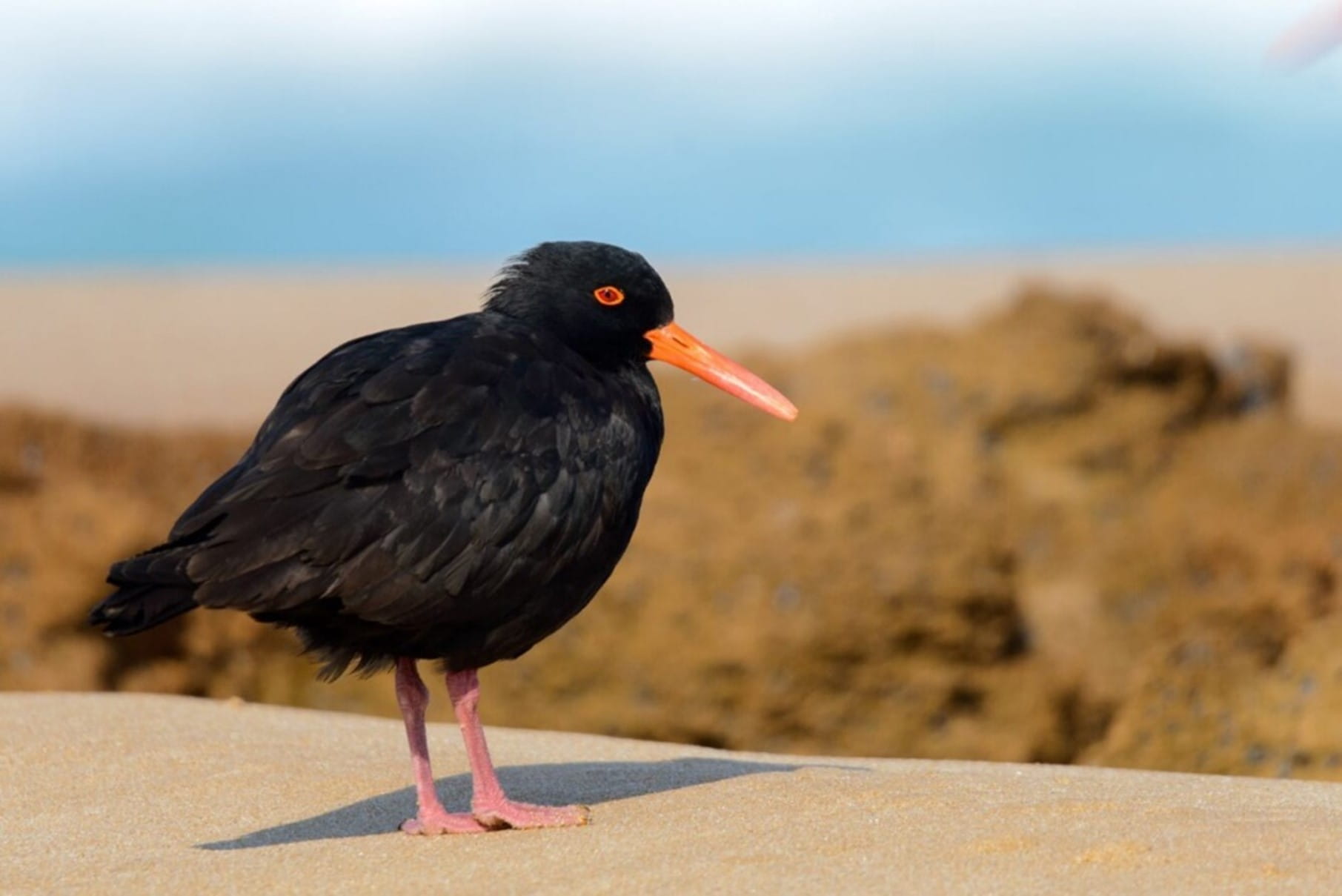
Both can be found in large numbers at Corner Inlet Marine National Park. To Mark, their speciation is of interest. “To reduce competition, they are segregated by their preferred habitats. Pied Oystercatchers are most frequently found on sandy shorelines while the Sooty Oystercatcher often prefer rocky coasts”. They don’t always play by the rules, as seen in the alternate image. Image credit: Mark Lethlean.
Far Eastern Curlew (Numenius madagascariensis)
Its long, curved bill allows it to feed on worms found in the deepest mud. Image credit: Steven Kuiter.
The Far Eastern Curlew is one of the largest shorebirds in the world, at just under a kilogram in weight. It migrates annually from its breeding areas in northern China and Russia in July to mid-September and stays throughout Australia in the warmer seasons.
These birds have recently been seen among the mangrove flats at French Island National Park.
Threats
Shorebirds represent some of the most endangered birds in the world. Many appear to be in rapid decline, in part due to human induced climate change, which is altering previous shoreline environments. Mark also states, “the conversion of overseas wetlands, which provide critical stop-over sites during migration, to industrial and agricultural land is one of the greatest threats. Even some ‘protected’ wetlands are being destroyed overseas”.
The introduction of new and invasive weeds, changes to flow regime further upstream and even hunting in other countries are contributing to declining numbers. In Victoria, there are 12 wetlands listed as internationally significant under the Ramsar convention. Parks Victoria manages or partially manages 11 of these Ramsar wetlands.
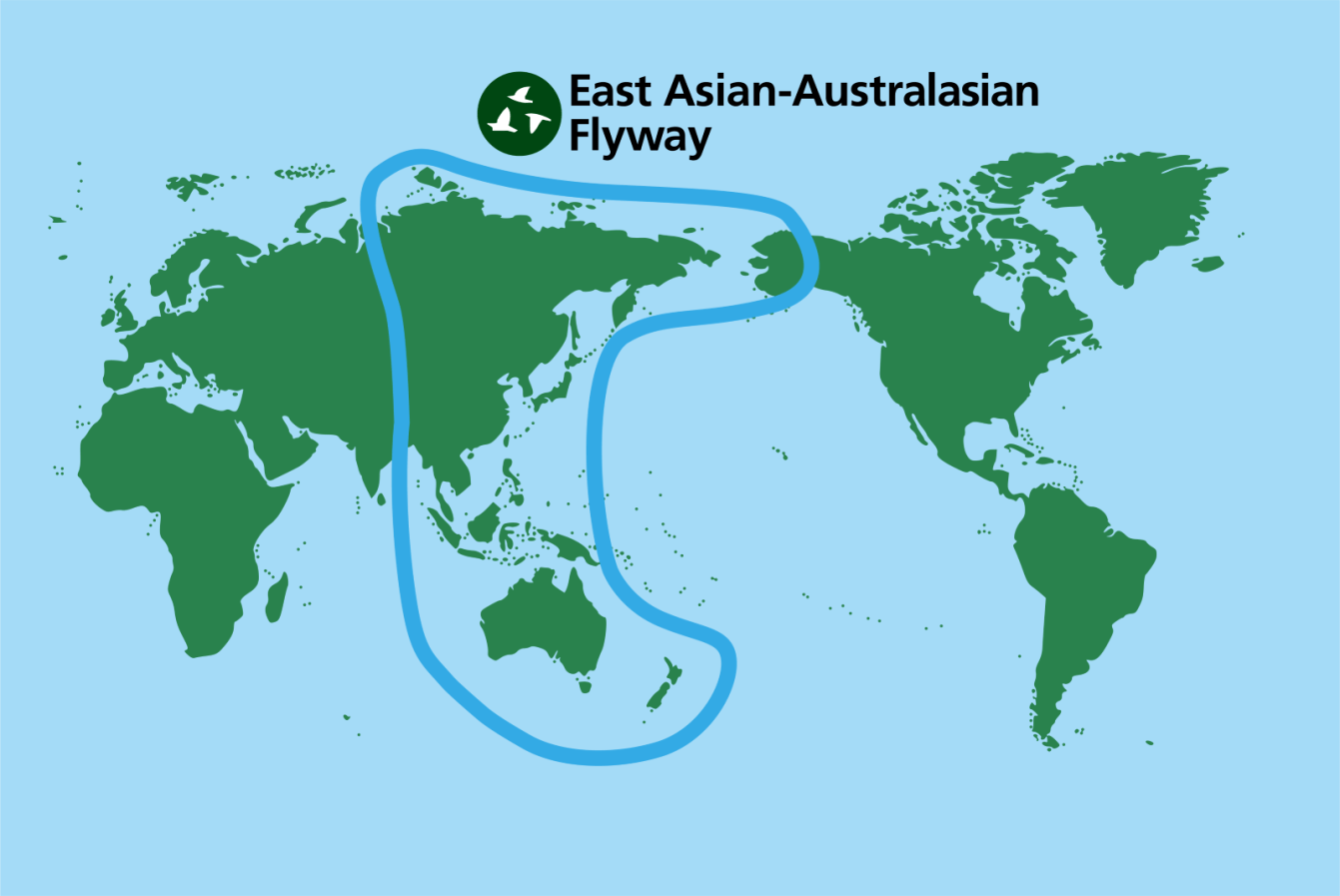 The extent of the annual migration paths (bounded by blue line) of shorebirds in Asia and the Pacific.
The extent of the annual migration paths (bounded by blue line) of shorebirds in Asia and the Pacific.
One of the best ways to appreciate these unique birds is to witness them in person, and February is one of the best months to observe these migratory marvels. Click on any of the parks listed in this post for where you can go. Be sure to bring a good pair of binoculars as it can be difficult to get close to shorebirds without disturbing them.
When visiting wetlands with shorebirds remember to keep your distance, avoid disturbing them and leave your dog at home. Use the citizen science apps iNaturalist to help track populations and help scientists better understand Australia’s most endangered group of birds.


